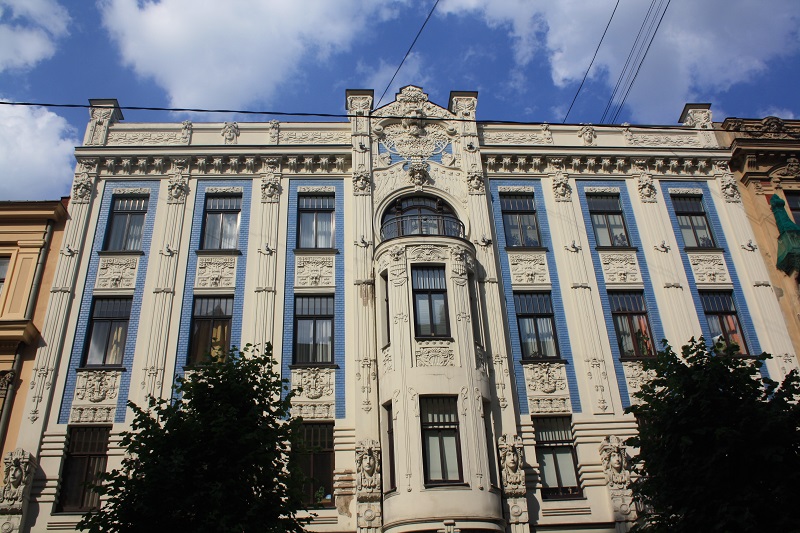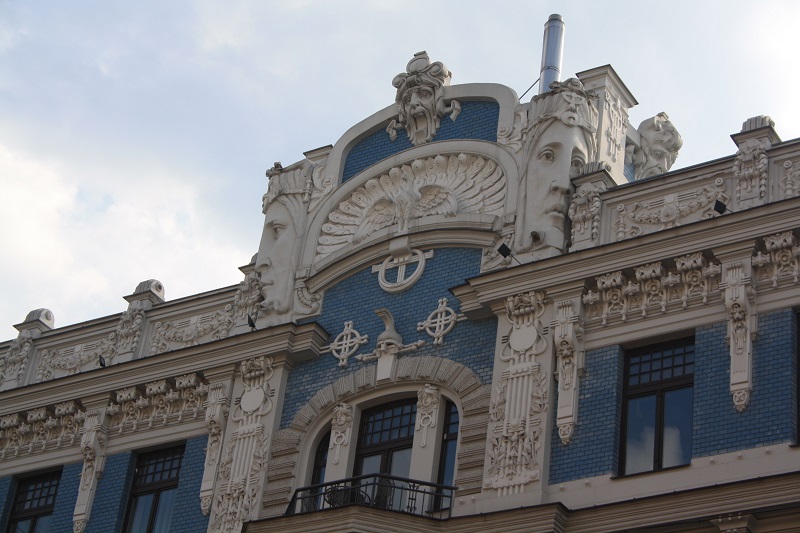Jugendstil architecture
Jugendstil is a type of Art Nouveau architecture that emerged in the late-19th and early-20th centuries.
The aim of Art Nouveau was to escape the eclectic historical styles that had come to dominate the late-19th century and so modernise design. Inspiration was drawn from both organic and geometric forms, merging flowing, natural designs with more angular and rigid contours.
As the Art Nouveau movement spread through Europe it evolved in different forms in different countries – Style Moderne in France, Secession Style in Austria, and Jugendstil in Germany.
The Latvian capital of Riga is the most celebrated Jugendstil city in the world, with a large concentration of buildings designed in the style – roughly one-third of all the buildings in the city centre. The reason the style is so prevalent is that at the height of the Art Nouveau period, Riga was experiencing a financial boom. At the same time, restrictions were lifted on the construction of masonry buildings outside the Old City fortified walls. Accordingly, most of Riga’s Jugendstil buildings date from between 1904 and 1914.
One of the most prolific and revered Jugendstil architects was Mikhail Eisenstein, who is particularly well known for his highly-ornamental three-storey apartment buildings on Alberta iela. One example features a massive woman’s face, a screaming woman, a satyr, and large busts of Lady Liberty.
On other buildings, entrances are guarded by sphinx, and windows are shaped like large keyholes. At the corner or Elizabetes and Antonijas streets, one of the city’s most famous buildings features a blue façade with long faces at the top (see below).
[edit] Find out more
[edit] Related articles on Designing Buildings Wiki
Featured articles and news
Gregor Harvie argues that AI is state-sanctioned theft of IP.
Many resources for visitors aswell as new features for members.
Using technology to empower communities
The Community data platform; capturing the DNA of a place and fostering participation, for better design.
Heat pump and wind turbine sound calculations for PDRs
MCS publish updated sound calculation standards for permitted development installations.
Homes England creates largest housing-led site in the North
Successful, 34 hectare land acquisition with the residential allocation now completed.
Scottish apprenticeship training proposals
General support although better accountability and transparency is sought.
The history of building regulations
A story of belated action in response to crisis.
Moisture, fire safety and emerging trends in living walls
How wet is your wall?
Current policy explained and newly published consultation by the UK and Welsh Governments.
British architecture 1919–39. Book review.
Conservation of listed prefabs in Moseley.
Energy industry calls for urgent reform.
Heritage staff wellbeing at work survey.
A five minute introduction.
50th Golden anniversary ECA Edmundson apprentice award
Showcasing the very best electrotechnical and engineering services for half a century.
Welsh government consults on HRBs and reg changes
Seeking feedback on a new regulatory regime and a broad range of issues.
CIOB Client Guide (2nd edition) March 2025
Free download covering statutory dutyholder roles under the Building Safety Act and much more.




























